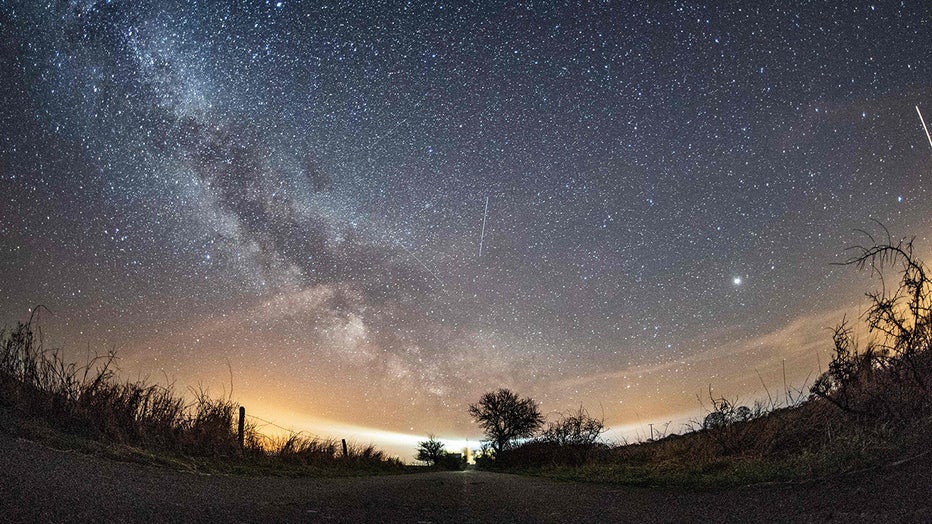Lyrid meteor shower: When it peaks and how to watch it

Meteor showers explained: what to know and how to watch
We call them shooting stars, but it's actually meteors that create dazzling streaks of light across our night sky. (FOX Weather)
The April Lyrids will be active between April 20 and 30 this month.
The meteor shower is expected to peak between 1:10 p.m. on April 22 and 12:45 a.m. on April 23, according to NASA.
Its peak – which the agency notes is uncertain – has varied in past years, with the rate of meteors per hour also changing. The average peak rate is about 18 visible meteors per hour, but has shown higher rates of up to about 23 meteors per hour.
Short bursts of faint meteors have also been reported, including one of 90 meteors per hour in 1982.

The milky way and meteors of the April Lyrids annual meteor shower are seen in the night sky over Burg auf Fehmarn on the Baltic Sea island of Fehmarn, northern Germany, on April 20, 2018. - Germany OUT (Photo by Daniel Reinhardt / dpa / AFP) / Germa
The Lyrids – one of the oldest known meteor showers – appear to radiate from near the constellation Lyra. Known for their fast and bright meteors, the Lyrids can produce the occasional fireball.
Meteors come from leftover comet particles and bits from broken asteroids. When the comets move around the sun, they leave behind a dusty debris trail. Every year, the Earth passes through these trails, allowing the leftovers to collide with its atmosphere, creating streaks in the sky as they disintegrate.
The pieces of space debris that interact with the atmosphere to create the Lyrids originate from the comet C/1861 G1 Thatcher.
RELATED: 'Swarm of Meteors' illuminate Kansas sky
The Lyrids are best viewed away from their radiant, appearing longer that way.
Viewers in the Northern Hemisphere have the best perspective during the dark hours.
NASA advises people there to look up just after about 10:30 p.m. local time on April 22 – and before the sky shows signs of dawn.
Skywatchers should find a place with clear skies and far away from any light sources.
People should lie flat on their back with their feet facing eastward and look up, noting that the eyes should be given about 30 minutes to adapt to the dark.
The more sensitive a person's eyes are, the more chance they will have of seeing meteors.
However, even a short exposure to light will start the adaptation over again.

